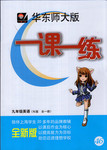题目内容
B
Sometimes people add to what they say even when they don't talk. Gestures are the “ silent language” of every culture. We point a finger or move another part of the body to show what we want to say. It is important to know the body language of every country or we may be misunderstood.
In the US,people greet each other with a handshake in a formal introduction. The handshake must be firm. If the handshake is weak,it is a sign of “weakness or unfriendliness”. Friends may place a hand on the other's arm or shoulder. Some people,usually women,greet a friend with a hug.
Space is important to Americans. When two people talk to each other,they usually stand about two and a half feet away and at an angle (角度) ,so they are not facing each other directly. Americans get uncomfortable when a person stands too close. They will move back to have their space. If Americans touch another person by accident,they say ,“Pardon me” or “Excuse me”. Americans like to look at the other person in the eyes when they are talking. If you don't do so,it means you are bored,hiding something,or are not interested. But when you stare at someone,it is not polite.
For Americans,thumbs-up means yes,very good,or well done. Thumbs-down means the opposite. To call a waiter,raise one hand to head level or above. To show you want the check,make a movement with your hands as if you are signing a piece of paper. It is all right to point at things but not at people with the hand and index finger (食指) . Americans shake their index finger at children when they scold them and pat them on the head when they admire them.
Learning a culture's body language is sometimes confusing (令人困惑的) .If you don't know what to do,the safest thing to do is to smile.
41. From the first paragraph we can learn that.
A. Americans like to use gestures
B. gestures can help us express ourselves
C. gestures don't mean anything while talking
D. we can learn a language well without body language
42. If you are introduced to a stranger in the US,you should .
A. greet him with a hug
B. shake his hand firmly
C. shake his hand weakly
D. place a hand on his shoulder
43. Which behaviour is acceptable when people talk to each other in the US?
A. Not looking at the other person in the eyes.
B. Facing each other directly.
C. Not standing too close.
D. Touching each other.
44. When your American friend gives you a thumbs-up,he may .
A. express his satisfaction to you
B. express his worries about you
C. show his rudeness to you
D. show his anger to you
45. In the last paragraph the author tells us that .
A. we should always talk to others with a smile
B. it is not difficult to learn body language
C. body language is very helpful to us
D. smiling is a good choice for us
41. B解析:推理判断题。第一段介绍了身 势语有助于人们沟通,是一种无声的语言。
42. B解析:细节理解题。根据第二段前三 句可知,在美国当被介绍给陌生人时,与其 握手要用力,否则会被视为不友好。
43. C解析:细节理解题。根据第三段第三、 四句可知,美国人相互交谈时不会站得太 近。由第三段内容可知其他三项内容都不 是恰当的行为。
44. A解析:细节理解题。根据第四段第一 句可知,对美国人来说,竖起拇指意味着 “干得很好”,故A项正确。
45. D解析:细节理解题。最后一段说明,学 习一种文化背景下的身势语有时会使人很 困惑,在不知道该如何做时,微笑是最安全 的做法。

 华东师大版一课一练系列答案
华东师大版一课一练系列答案